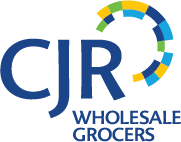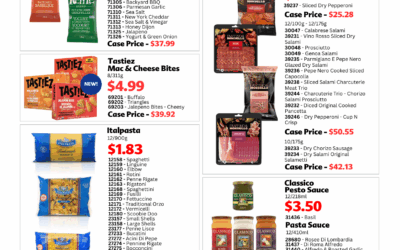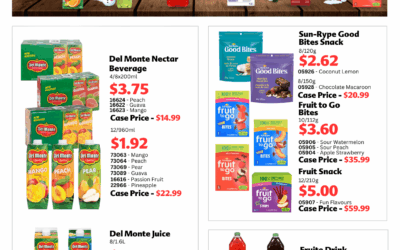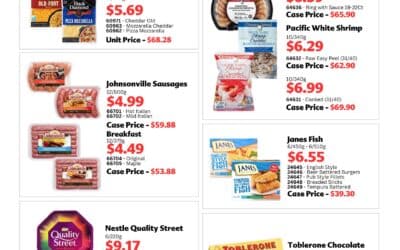Upselling is a strategic tool that can significantly boost the revenue of both restaurants and grocery stores. By encouraging customers to purchase more than they initially intended, businesses can increase their average order value (AOV) and enhance overall profitability. This blog speaks about effective upselling techniques and provides actionable insights to help you master the art of upselling in your establishment.
What is Upselling?
Upselling is a sales technique where a seller persuades the customer to purchase a more expensive item, upgrade, or add-on to generate more revenue. This is different from cross-selling, which involves suggesting complementary products to the one being purchased.
Why is Upselling Important?
- Increased Revenue: By enhancing the value of each transaction, businesses can significantly boost their income.
- Improved Customer Experience: When done correctly, upselling can enhance the customer’s experience by providing them with better or more suitable products.
- Inventory Management: Upselling can help move high-margin or slow-moving items, improving inventory turnover.
Techniques for Upselling in Restaurants
Menu Engineering
Menu design is crucial in encouraging upsells. Highlight high-margin items, like focusing on the dishes that bring in the highest profit. Use graphical elements like boxes, borders, or icons to draw attention to these items. You can also create a “Chef’s Specials” section for premium dishes that you want to upsell.
Use descriptive language, For example, instead of “Grilled Chicken,” use “Succulent Grilled Chicken Breast with Aromatic Herbs.” Descriptions should evoke the senses and create a vivid image of the dish, making customers more likely to choose higher-priced items.
Place popular and profitable dishes in prominent positions. The layout of your menu can significantly influence customer choices. Place the most popular and profitable dishes in the top-right corner, as this is where customers’ eyes naturally gravitate. Additionally, consider placing high-margin items at the top of each section, as customers often read from the top down.
You can read our comprehensive guide on Menu Engineering here. < Will link to new menu engineering blog when posted
Offer Pairings
Develop a list of strategic pairings that complement your main courses. Work with your chef to create combinations that enhance the flavours of the dishes. For example, suggesting a premium wine with a steak entrée can be an effective upsell. A rich, full-bodied red wine like Cabernet Sauvignon or Merlot can complement the steak’s flavour, making the meal more enjoyable for the customer.
Include pairing suggestions directly on the menu. For instance, next to the steak entrée, you could add a note saying, “Pairs perfectly with our 2018 Napa Valley Cabernet Sauvignon.” This not only informs the customer of the pairing but also subtly encourages the upsell.
Offer combination deals where customers can enjoy a discount when they order a main course with a suggested drink or side. For example, you could have a “Steak and Wine Night” where customers receive a 10% discount on a bottle of wine when ordered with any steak entrée. This encourages customers to indulge in both the main course and the paired item, increasing the overall sale.
Highlight Specials
Promote daily or weekly specials that include high-margin items. This can create excitement and anticipation among your customers, encouraging them to try something new and potentially more profitable for your restaurant. Design specials that are not only high-margin but also appealing and unique. Use seasonal ingredients, introduce new dishes, or offer premium versions of popular items. Specials should stand out from your regular menu, giving customers a reason to indulge.
Use multiple channels to promote your specials. Display them prominently on your menu, whether printed or digital. Use table tents, chalkboards, or digital screens within your establishment to catch customers’ attention. Additionally, leverage social media platforms to announce daily or weekly specials, creating buzz and attracting more customers.
Encourage your staff to tell a story about the special. This could involve the inspiration behind the dish, the source of the ingredients, or a unique cooking technique. Storytelling can create a connection with the customer, making the special more memorable and appealing.
Utilize Technology
Invest in digital menu boards that can dynamically update and showcase high-margin items, specials, and suggested pairings. These boards can be strategically placed in high-traffic areas of your restaurant to catch customers’ attention. Use eye-catching visuals, animations, and even videos to highlight featured items and upsell opportunities.
Implement tablet ordering systems at each table or handheld devices for your staff. These systems can store customer preferences and past orders, allowing servers to make personalized recommendations. For example, if a customer frequently orders steak, the system can suggest premium cuts or wine pairings that complement their choice.
Integrate your digital menu boards and tablet ordering systems with your Customer Relationship Management (CRM) software. This integration allows you to gather and analyze customer data, such as order history, preferences, and spending patterns. Use this information to tailor upsell suggestions in real-time, enhancing the customer experience and increasing sales.
Techniques for Upselling in Grocery Stores
Product Placement
Position high-margin items at eye level, where they are most visible and easily accessible to customers. This prime real estate ensures that these items catch customers’ attention immediately, increasing the likelihood of impulse buys and upsells. Use shelves, display stands, or fixtures that place these items front and centre.
Place high-margin items strategically near checkout areas, where customers are more likely to make additional purchases. These impulse buys can be encouraged by displaying complementary products or small items that complement larger purchases. For example, placing gourmet chocolates or beverages near the checkout can prompt customers to add these items to their basket or cart.
Create cross-merchandising displays that pair related products together. For instance, if you sell meats, display grilling meal add ons and BBQ sauces nearby. This not only enhances the customer’s shopping experience by providing convenience but also encourages them to purchase multiple items in one visit, increasing the average transaction value.
Bundling Products
Create bundles that combine related products or complementary items into one package. For example, bundle steaks with flowers or chocolates for date night, or pair a set of cookware with kitchen utensils and oven mitts. These bundles provide convenience and value to customers while encouraging them to purchase additional items they may not have considered individually.
Offer a slight discount when items are purchased together as a bundle. The discount should be attractive enough to incentivize customers to opt for the bundle rather than buying each item separately. For instance, offer a 10% discount on the total price of the bundled items compared to their individual prices. This perceived savings encourages customers to take advantage of the bundle deal, increasing your overall sales volume and revenue.
Clearly communicate the value proposition of bundled packages to customers. Emphasize the convenience, cost savings, and enhanced experience that comes with purchasing a complete set of products. Use signage, promotional materials, or online listings to showcase the benefits of each bundle, making it easy for customers to understand why they should opt for the bundled offer.
Best Practices for Effective Upselling
Personalization is Key
Collect and analyze customer data through your CRM (Customer Relationship Management) system or loyalty program. This data includes past purchases, preferences, demographic information, and interactions with your brand. Use this valuable information to create customer profiles and understand their buying behavior.
Segment your customer base into groups based on similar characteristics or purchasing patterns. For example, categorize customers by their preferred product categories, average order value, or frequency of purchases. This segmentation allows you to tailor upselling strategies to each group’s specific needs and preferences.
Implement recommendation engines on your website or digital platforms to suggest relevant products based on a customer’s browsing history or past purchases. These algorithms analyze data in real-time to generate personalized product recommendations that are likely to resonate with individual customers. For instance, if a customer frequently purchases athletic apparel, recommend new arrivals in that category or related accessories.
Be Subtle and Authentic
Before making any upsell recommendations, take the time to understand the customer’s needs, preferences, and current purchase intent. Engage in active listening during interactions to identify opportunities where additional products or services could genuinely benefit the customer. For example, if a customer is purchasing a laptop, inquire about their usage requirements to suggest relevant accessories or software upgrades.
Use upselling opportunities as a chance to educate customers about product features, benefits, and value-added services. Provide clear and concise information that helps customers make informed purchasing decisions based on their specific needs. For instance, explain how a higher-tier subscription plan offers additional features that align with the customer’s usage patterns.
Highlight the value proposition of upsell suggestions by emphasizing how they enhance the customer’s overall experience or provide additional convenience, functionality, or savings. For example, if a customer is purchasing a smartphone, explain how a protective case can extend the device’s lifespan and protect it from damage, thus offering long-term value.
Monitor and Adjust
Monitor key performance indicators (KPIs) such as average order value (AOV), upsell conversion rates, customer feedback scores, and staff performance metrics related to upselling. By tracking these metrics, you can assess the effectiveness of your upselling strategies and identify areas for improvement.
Evaluate the impact of upselling on your AOV over time. Measure how much additional revenue per transaction is generated through upsells and cross-sells. Compare AOV before and after implementing upselling tactics to gauge the financial impact and success of your strategies.
Track the percentage of customers who accept upsell offers compared to those who decline or opt for a lower-priced alternative. Analyze conversion rates across different product categories, customer segments, and sales channels to identify which upselling tactics are most effective and where adjustments may be necessary.
Mastering the art of upselling can significantly impact the financial success of restaurants and retail stores. By implementing these techniques and fostering a customer-centric approach, businesses can increase their average order value while enhancing the customer experience. At CJR Wholesale, we understand the power of upselling and are committed to helping our partners achieve greater profitability through strategic sales techniques. Embrace these strategies and watch your revenue grow as you perfect the art of upselling in your establishment.










